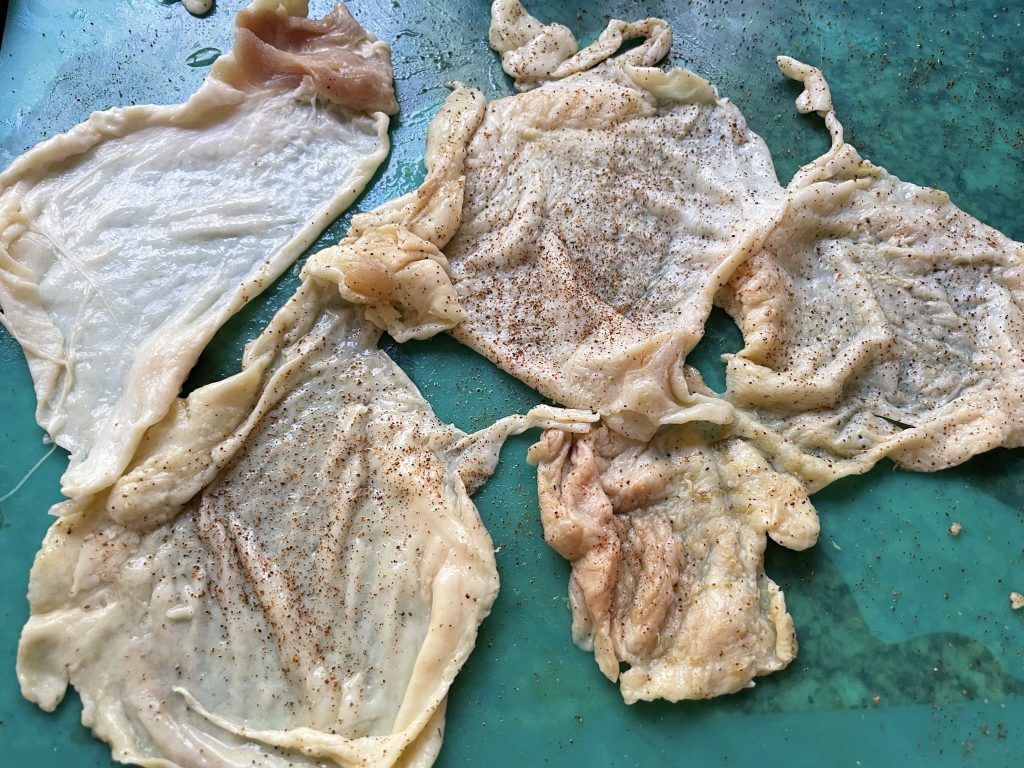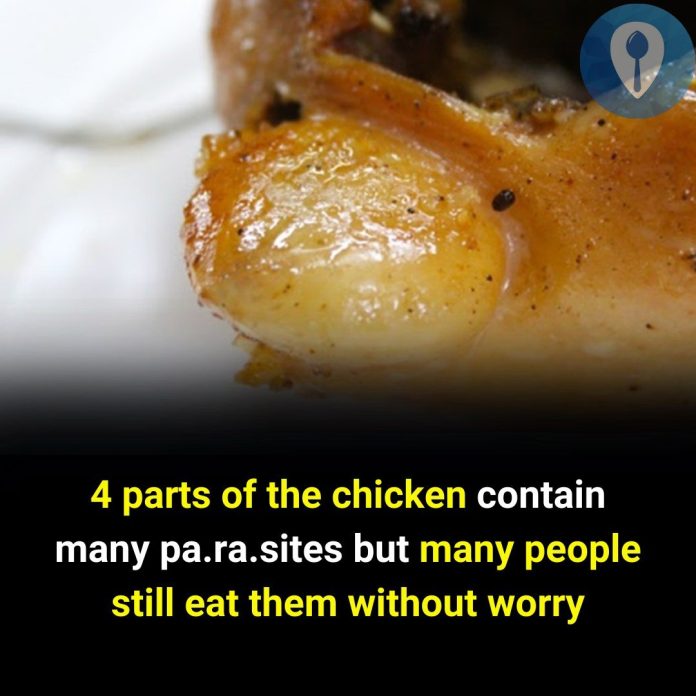Chicken is a widely consumed poultry meat, celebrated for its versatility and nutritional benefits. Rich in protein and essential nutrients, it plays a significant role in various culinary traditions worldwide. However, certain parts of the chicken are often advised against consumption due to potential health risks associated with parasites and bacterial contamination. Understanding these risks is crucial for making informed dietary choices and ensuring food safety.
1. Chicken Skin
Many individuals relish the crispy texture and flavor of chicken skin. However, it’s important to note that chicken skin is predominantly composed of fat. While fat is an essential component of a balanced diet, excessive intake of saturated fats can contribute to health issues such as obesity and cardiovascular diseases. Moreover, if the chicken is not properly cleaned and cooked, the skin can harbor bacteria and parasites that pose health risks upon consumption. Therefore, moderating the intake of chicken skin and ensuring thorough cooking are advisable practices.

2. Parson’s Nose (Pygostyle)
The parson’s nose, or pygostyle, refers to the fleshy protuberance at the rear end of the chicken, where the tail feathers are attached. This part contains lymphoid tissue, which is integral to the bird’s immune system, aiding in the filtration of pathogens. Consequently, the parson’s nose may accumulate bacteria and viruses. Consuming this portion without adequate cleaning and cooking could potentially expose individuals to these pathogens. While some culinary traditions may include the parson’s nose as a delicacy, it is prudent to exercise caution and ensure it is thoroughly cooked to mitigate health risks.
3. Chicken Lungs
Chicken lungs are part of the bird’s respiratory system, responsible for gas exchange and filtering airborne contaminants. As such, they can accumulate various impurities, including bacteria and parasites. Even with proper cooking, the dense nature of lung tissue may allow some contaminants to persist, posing potential health risks. Given these concerns, many culinary guidelines recommend against the consumption of chicken lungs. Prioritizing other organ meats that are less prone to contamination is a safer dietary choice.
4. Chicken Head
In certain cultures, chicken heads are considered a delicacy, valued for their unique flavor and texture. However, the head is a site where various substances can accumulate, including bacteria, toxins, and heavy metals. These contaminants may pose health risks, particularly to vulnerable populations such as children and individuals with compromised immune systems. To minimize potential exposure to these harmful substances, it is advisable to limit or avoid the consumption of chicken heads. Focusing on other, less risky parts of the chicken can contribute to a healthier diet.

General Recommendations for Safe Chicken Consumption
To ensure the safe consumption of chicken and minimize health risks associated with parasites and bacteria, consider the following guidelines:
- Proper Cleaning: Thoroughly clean chicken parts under running water to remove visible contaminants.
- Adequate Cooking: Cook chicken to an internal temperature of at least 165°F (74°C) to effectively kill harmful pathogens.
- Selective Consumption: Focus on consuming parts of the chicken that are less prone to contamination, such as the breast and thigh meat.
- Hygienic Handling: Maintain good kitchen hygiene by sanitizing surfaces and utensils that come into contact with raw chicken to prevent cross-contamination.
By adhering to these practices, individuals can enjoy the nutritional benefits of chicken while safeguarding their health against potential risks associated with certain parts of the bird.

















